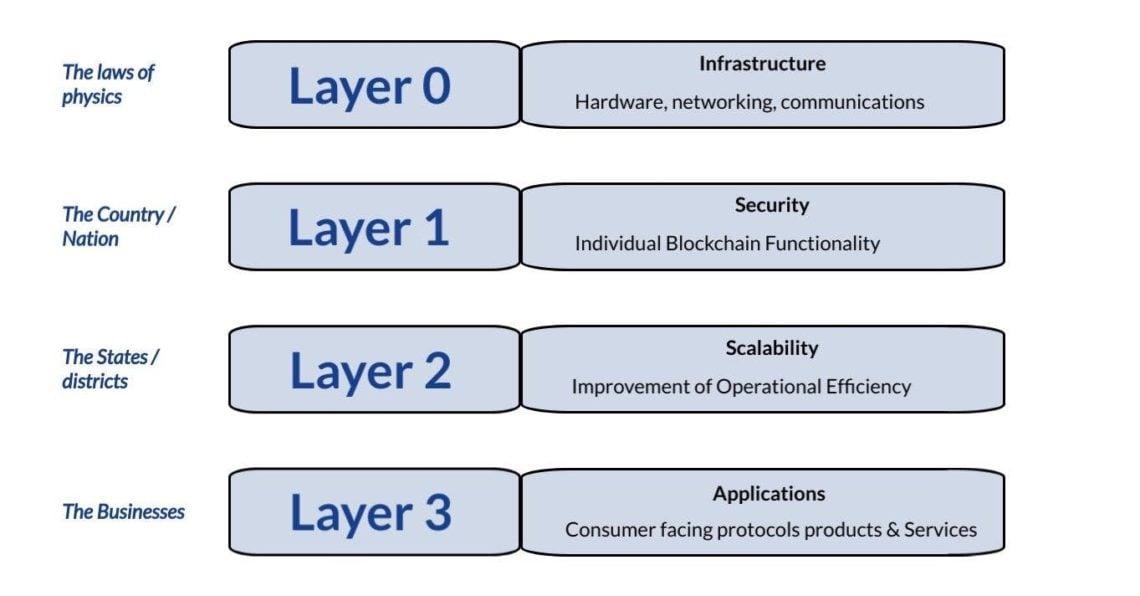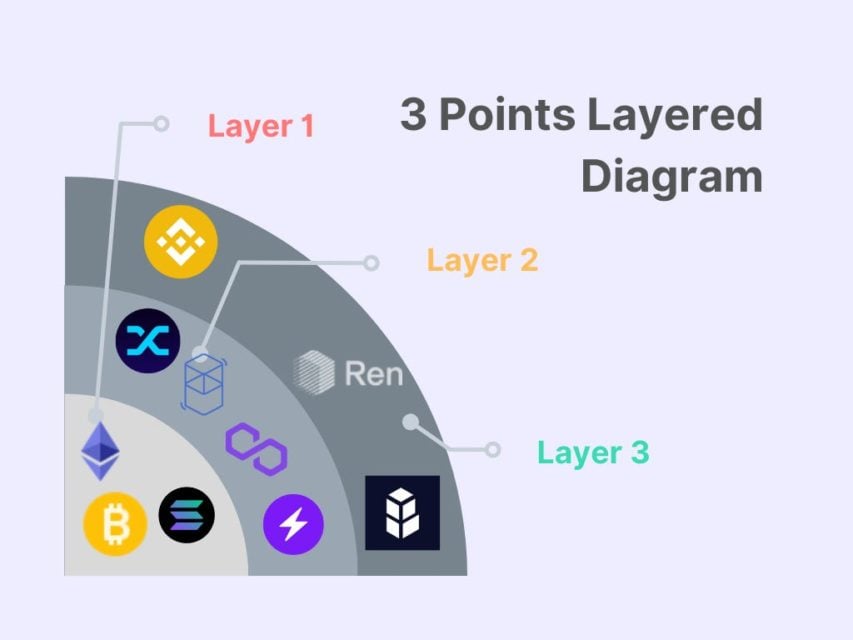“Layer 0”, “Layer 1” and “Layer 2” are concepts we all hear frequently. These terms refer to different levels of the blockchain stack, and understanding the differences between them is essential to understanding blockchain technology.
What is Tier 1?

Layer 1 is the underlying blockchains such as Bitcoin, Ethereum, Solana, and Cardano; can verify transactions using its own network. It is the base layer on which other layers can be built. Tier 1 blockchain networks also have their own tokens that are used to pay transaction fees.
A Tier 1 scaling solution represents changes made directly to the base tier, all to improve the scalability, distribution, or security of the network.
For example; increase the size of the blocks. We can count sharding to other Tier 1 scaling methods, changing the consensus mechanism. The biggest problem with Tier 1 scaling is that it is difficult to implement and leads to a hard fork of the blockchain.
What is Layer 2?
Layer 2 protocols are built on top of Layer 1 blockchains to address the scalability issues of Layer 1.
I want to talk about this on Ethereum:
Although Ethereum is one of the most popular networks, we know that the transaction fees also get very high from time to time. Layer 2 scaling solutions started to be used in order to reduce this amount, which you call Gas Fee, and to speed up the network. Tier 2 scaling solutions bring the computation to the secondary chain and take the load off the main chain. This makes their transactions much faster and cheaper than on the main chain.
There are numerous Layer 2 scaling solutions for the Ethereum network, such as Arbitrum, StarkWare, Optimism, and others.
What is Layer 0?
Layer 0 protocols provide solutions to the interoperability of Layer 1 projects. This is a major issue with Tier 1 because it is difficult for a project that enters one ecosystem to migrate to the other ecosystem. Layer 0 fixes this.
Polkadot are the most famous examples of the Cosmos Layer 0 blockchain. Consider an ecosystem of different Tier 1 blockchains that can communicate with each other. Developers can build their projects without worrying that their projects will be isolated on a single blockchain. The scalability issue is also easily resolved, as the workload from a blockchain can easily spread across other Tier 1s.
What is Layer 3?
Tier 3 dApps, games, storage, etc. are protocols that enable blockchain-based applications. Therefore, we can also call it the application layer.
Most Tier 1 blockchains allow you to easily build Tier 3 projects directly onto their networks, for example, the Ethereum blockchain allows smart contracts at this layer but this is not possible with Bitcoin.
In short:

Tier 1: Basic blockchain network but has issues with scaling (eg Bitcoin).
Layer 2 : Scaling solution for Layer 1 protocols. (eg Bitcoin Lightning Network).
Layer 3 : Enables blockchain-based dApps, games and more. Also known as the application layer (eg Uniswap).
Tier 0: Enables interoperability between Layer 1 protocols (eg Cosmos).







